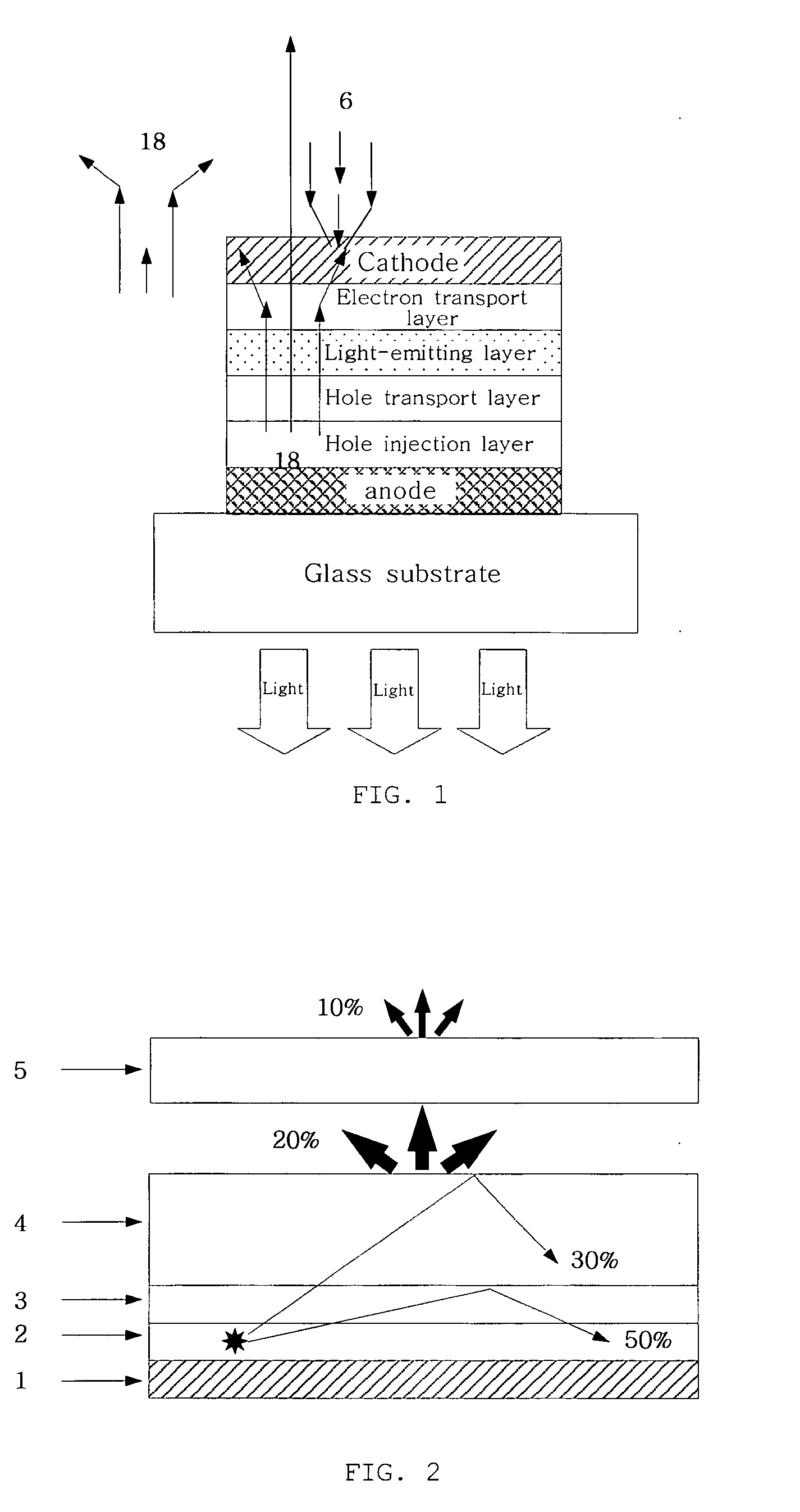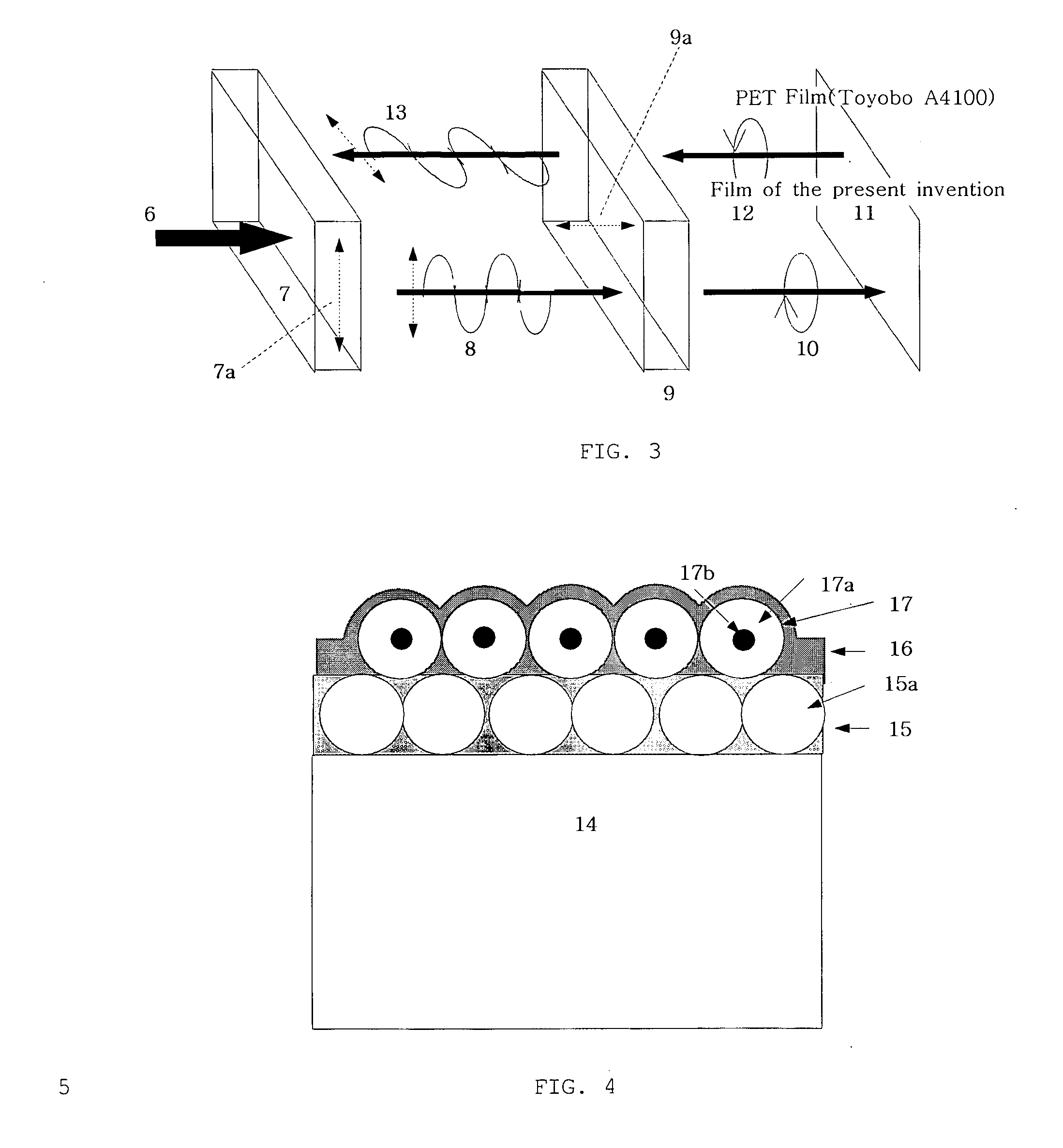Brightness-enhanced multilayer optical film with low reflectivity for display and organic light emitting diode display using the same
a multi-layer optical film and light-emitting diode technology, applied in the direction of discharge tube luminescnet screens, other domestic articles, organic semiconductor devices, etc., can solve the problems of low light-emitting device light-emitting device efficiency drop, light-emitting device fabricated through difficult layer formation at increased costs compared to conventional fabrication of light-emitting devices, etc., to achieve low reflectivity and high light-emitting efficiency , the effect of high-
- Summary
- Abstract
- Description
- Claims
- Application Information
AI Technical Summary
Benefits of technology
Problems solved by technology
Method used
Image
Examples
example 1
[0077] A 100 μm-thick polyethylene terephthalate (PET) film was used as a transparent substrate. A coating solution for a light diffusion layer was prepared by the following procedure. First, 200 parts by weight of light-diffusing particles having an average diameter of 5 μm were sufficiently stirred and dispersed in a mixed solvent containing 300 parts by weight of isopropyl alcohol (IPA), 300 parts by weight of methyl ethyl ketone (MEK), 200 parts by weight of toluene and 100 parts by weight of cyclopentanone to obtain a dispersion of the light-diffusing particles. 100 parts by weight (solid content) of a heat-curable acrylic resin (Aekyung Chemical, Korea) was mixed with the dispersion, and then stirred for 3 hours to obtain a particle-dispersed resinous solution. One hour before formation of a light diffusion layer, 25 parts by weight of an isocyanate curing agent (Aekyung Chemical, Korea) was added to the resinous solution to prepare a coating solution for a light diffusion lay...
example 2
[0078] A multilayer optical film was produced in the same manner as in Example 1, except that the light-absorbing particles were used in an amount of 150 parts by weight to form a light-absorbing layer on the light diffusion layer.
example 3
[0079] An OLED display was manufactured by laminating the optical film produced in Example 1 or 2 in such a manner that an adhesive layer positioned opposite to the light-absorbing layer of the optical film was attached on top of a transparent substrate (indium-titanium oxide (ITO) glass) of a 14.1-inch OLED display (Samsung Electronics, Korea). The brightness of white light was measured at 500 1x.
PUM
 Login to View More
Login to View More Abstract
Description
Claims
Application Information
 Login to View More
Login to View More - R&D
- Intellectual Property
- Life Sciences
- Materials
- Tech Scout
- Unparalleled Data Quality
- Higher Quality Content
- 60% Fewer Hallucinations
Browse by: Latest US Patents, China's latest patents, Technical Efficacy Thesaurus, Application Domain, Technology Topic, Popular Technical Reports.
© 2025 PatSnap. All rights reserved.Legal|Privacy policy|Modern Slavery Act Transparency Statement|Sitemap|About US| Contact US: help@patsnap.com



